A deep whoo, whoo, whoo-whooo, whooo-whooo resonates across the field as evening quickly fades away. The three to eight loud, deep hoots come from a great horned owl. February and March are the best times to listen for owls calling as it is nesting season for most of them.
Owls call to attract a mate and establish a territory. Typically larger owls make lower-pitched calls than small owls. Male owls also have a lower-pitched call than females.
Cold nights don’t deter owls from sitting on eggs as early as February. Great horned owls have been known to successfully incubate eggs when nighttime temperatures drop down to as low as minus 27 degrees Fahrenheit.
When owls nest, they don’t build their own nest. Instead they take over the nest of others, such as crows, ravens, eagles or woodpeckers, or nest in tree cavities or on rock ledges.
An owl’s eggs indicate where the owls nests. Screech owls nest in woodpecker holes and their eggs are very round because they cannot fall out of the cavity. Whereas, barn owls have more oval eggs because they nest on ledges in barns or rock cliffs. A round egg could easily roll off a ledge, but an oval egg rolls in a circle.
Owls are raptors, also known as birds of prey, like hawks, falcons, eagles, osprey, vultures, condors and kites. All raptors are good hunters because of their eyes, beak, talons, and wings.
Raptors have excellent eyesight, up to ten times stronger than our eyesight. If our eyes were comparable to an owl’s eyes, they would be the size of tennis balls.
Unlike our eyes, an owl’s eyes are fixed in the socket and they only see in shades of gray. An owl’s eyes don’t move because they are packed full of rod cells. They have no cone cells which would allow them to see in color.
The density of rod cells helps them see at night under the light of the moon and stars. They cannot see in complete darkness.
To compensate for their eyes being fixed in the sockets, an owl can rotate its head 280 degrees quite quickly.
An owl’s eyes are front-facing which leaves less room for a beak on its skull. Other raptors have side eyesight, such as eagles, and have a larger beak. A larger beak enables the raptor to crunch bones into smaller pieces to swallow.
Since an owl has a small beak, it cannot crush bones into small pieces. Therefore, an owl swallows bone in whole pieces, which is evident in the owl pellets they regurgitate.
Great gray owls, the largest owl in Idaho, can swallow a whole mouse. The mouse moves down to the owl’s crop, which separates the meat from the undigestible parts (such as bones and feathers). Six to eight hours later the owl will silently cough up a pellet, the width of its throat, with the undigestible remains.
Unlike other raptors that tear the meat off the bone, owls eat the entire animal for the nutrition. They absorb calcium from the bones and other nutrients from the undigestible parts before they are regurgitated.
Like all raptors, owls use their sharp talons to capture prey, which ranges from rodents to birds to squirrels–even skunks for great horned owls. All birds have nails at the end of their toes, but raptors have very sharp, long, pointed nails that are curved, which are referred to as talons.
All raptors also have overs-sized wings to help them carry the weight of their prey, which can be as much as half of the bird’s body weight. Fast-flying raptors have narrow wings that come to a point with stiff feathers and a smooth leading edge. This configuration allows the raptor to fly fast but not quietly.
An owl’s wings are configured to fly slow and silently. Their round-ended, wide wings with soft feathers and fringe along the leading edge act as a muffler, allowing the owl to silently ambush its prey. With silent flight, the only time we will hear an owl is when they call.
Note: Thanks to Beth Paragamian, an IDFG wildlife education specialist, for bringing the live owls and owl mounts to KNWR for an owl program.

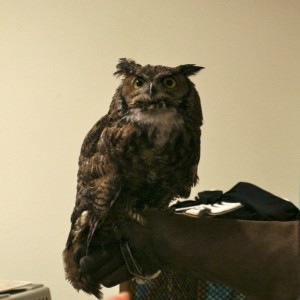
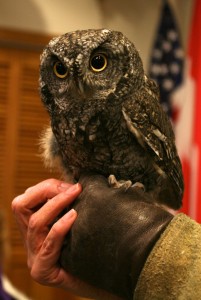
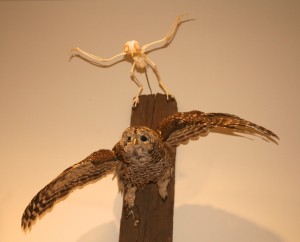
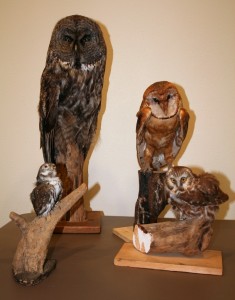
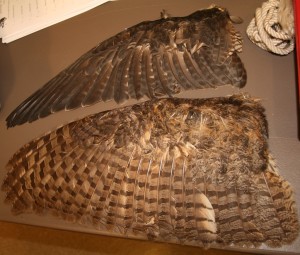
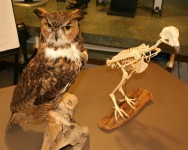
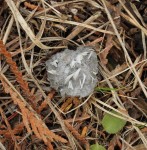
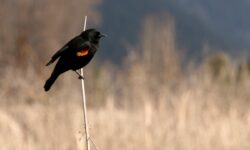
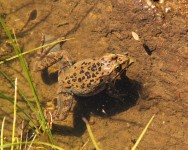
I have been absent for some time, but now I remember why I used to love this blog. Thank you, I¡¦ll try and check back more frequently. How frequently you update your website?
I’m glad you found my website again. I post weekly articles but hope to post more often.